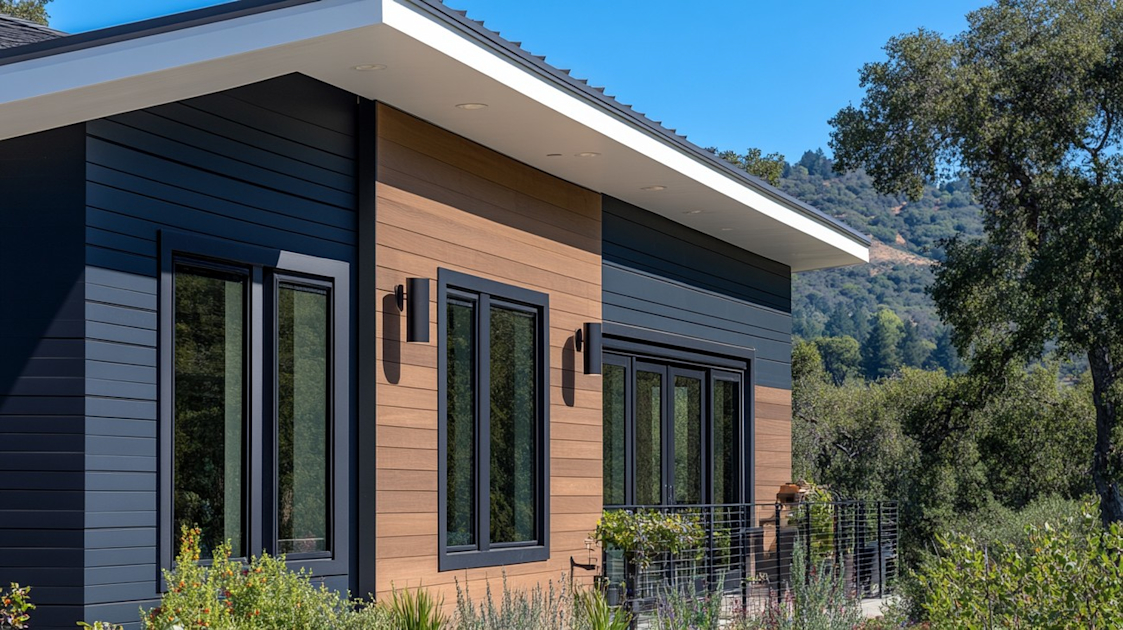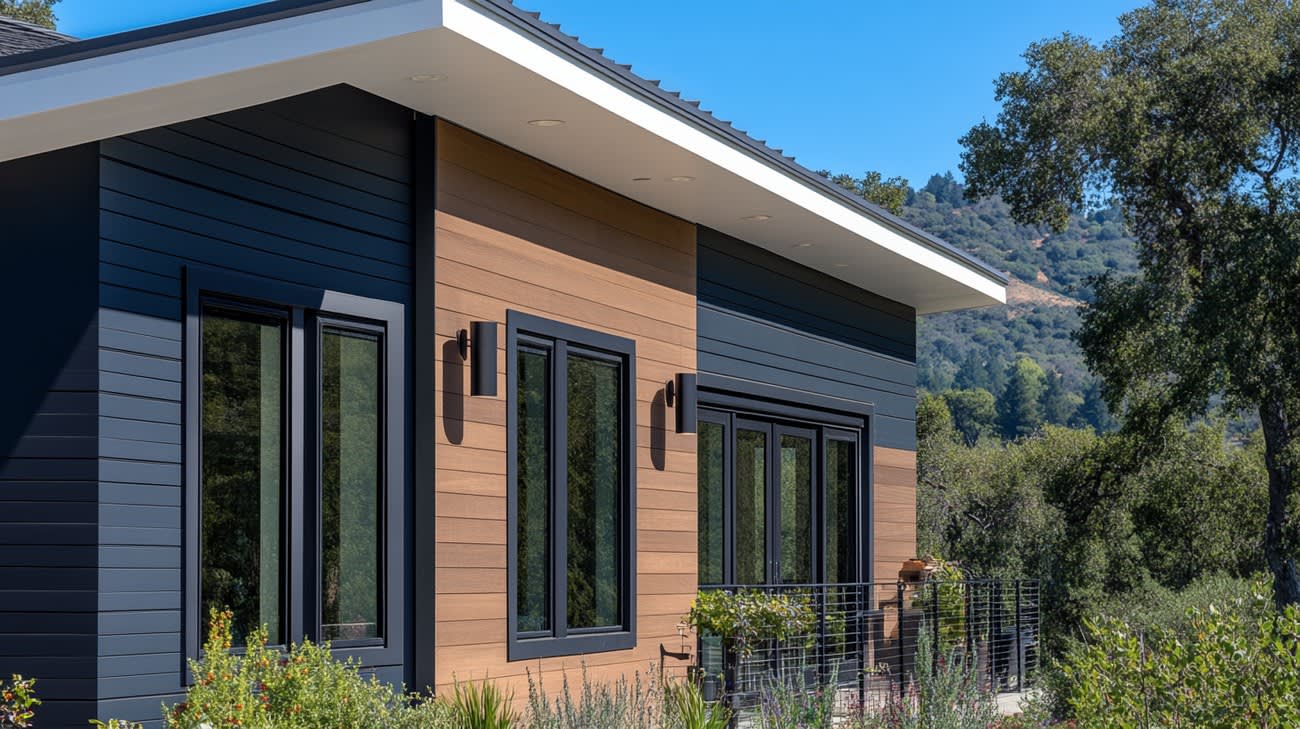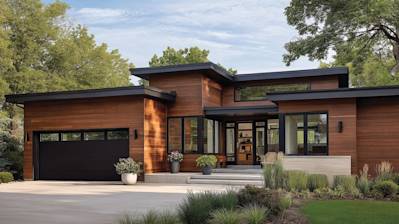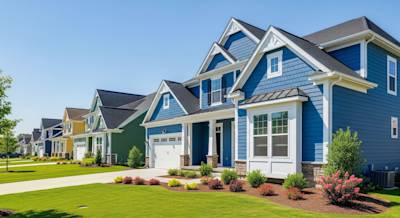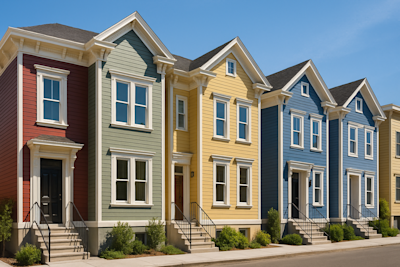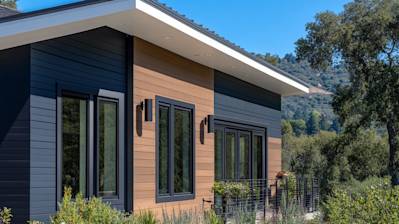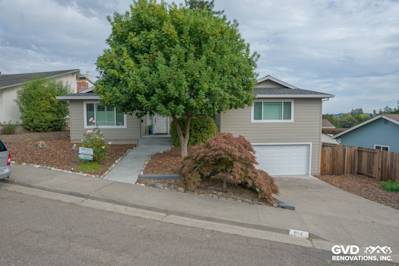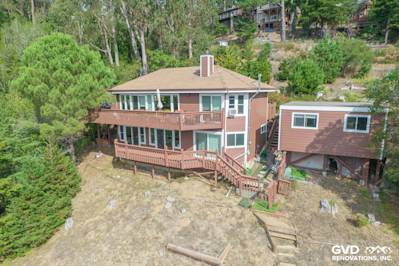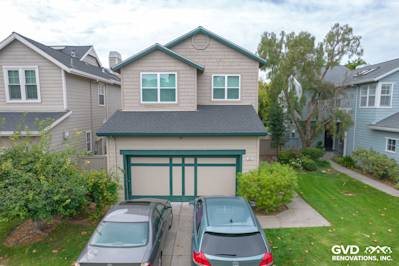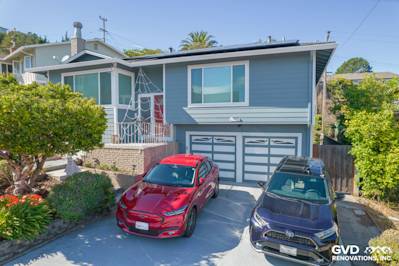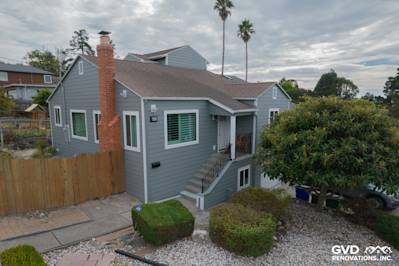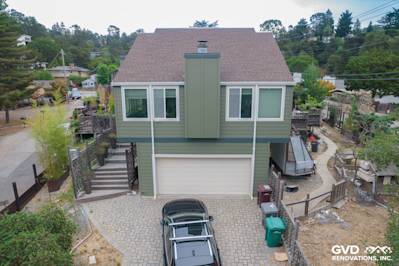Homeowners and contractors alike are always on the hunt for high-quality, durable, and aesthetically pleasing materials for construction and remodeling projects. When it comes to choosing siding for a house or a commercial structure, there’s a wide range of materials to choose from. One such option that’s been steadily gaining popularity is engineered wood siding.
In this comprehensive guide, we will delve deep into the world of engineered wood siding, focusing on its composition, diverse range of styles and colors, installation process, maintenance requirements, and more.
Understanding the Composition of Engineered Wood Siding
Engineered wood siding is an innovative product made from real wood, recycled wood materials, and binders. Its unique composition comprises of:
- Wood strands or fibers
- Wax for water resistance
- Resin binders to strengthen the material
- Zinc-borate compound to safeguard against fungal decay and pests
Understanding these components helps in comprehending why engineered wood siding stands out among various other siding options.
Decoding the Manufacturing Process
Engineered wood siding sets itself apart thanks to its distinctive manufacturing process. This process involves:
- The wood strands or fibers are infused with the wax, resin binders, and zinc-borate compound.
- They are then compressed under high heat and pressure conditions until a denser and stronger material forms, known as the engineered wood board.
- This board is then embossed and painted to mimic the appearance of real wood.
The result is a product that delivers the charm of real wood but with enhanced durability and enhanced resistance to environmental conditions.
Exploring the Versatility of Engineered Wood Siding
Another noteworthy aspect of engineered wood siding is its versatility, which offers infinite possibilities for style and design.
- Array of Styles: Whether you wish to give your exteriors a rustic charm with board and batten siding or want to stick to a traditional look with clapboard siding, engineered wood siding is available in a multitude of styles.
- Vibrant Hues: From natural wood shades to bolder color choices such as reds, blues, and greens, the color palette is wide and varied.
- Texture Choices: Engineered wood siding also provides a choice of texture – smooth or grainy –to suit your specific aesthetic preferences.
Installing Engineered Wood Siding: Step-by-step Guide
The process of installing engineered wood siding is relatively easy and straightforward if you are a skilled DIY enthusiast or a professional contractor. However, it may require patience and precision.
- Measure and Prep: Start by measuring your exterior walls. Remove old sidings, if any, and prepare the surface.
- Apply a Water-Resistant Barrier: This acts as a shield against moisture.
- Start Installation: Begin installation from the lowest part of the structure, ensuring each plank is straight and secure.
- Seal the Joints: After installation, seal the joints with an appropriate sealant to prevent moisture from penetrating.

Frequently Asked Questions about Engineered Wood Siding
2. Is Engineered Wood Siding Durable?
Absolutely! Engineered wood siding is designed for durability. It's resistant to impact damage from hazards such as hail or flying debris, which means it’s likely to stay pristine even in severe storm conditions. Plus, because it's treated for protection against termites and fungal decay, the siding can last for several decades when properly maintained.
3. How Does The Cost of Engineered Wood Siding Compare to Other Siding Options?
Engineered wood siding is generally more affordable than traditional wood siding, but slightly more expensive than vinyl siding. However, it’s important to consider more than just the initial cost. Engineered wood siding, when considered across its lifetime, can be a much more economical choice due to its durability, low maintenance requirements, and long lifespan.
4. What Maintenance Does Engineered Wood Siding Require?
Engineered wood siding requires minimal maintenance to keep it in top shape. Generally, you’ll want to clean it about once a year with a mild detergent and low-pressure garden hose. If you notice any areas where the paint has chipped or peeled, it's recommended to do some touch-up painting to prevent any potential moisture penetration.
5. Can Engineered Wood Siding Be Painted Or Stained?
Yes, it can! Most engineered wood siding comes pre-primed and ready for paint or can be ordered pre-finished in your color choice. This gives you the freedom to customize your home’s exterior to the color scheme you prefer. Engineered wood also holds paint well, allowing it to maintain its look for longer.
6. How Does Engineered Wood Siding Impact The Environment?
Engineered wood siding is considered to be an environmentally friendly choice. It takes less energy to produce than most other siding materials and is made from wood, a renewable resource. Some types of engineered wood siding are made from recycled wood fibers, further reducing the environmental impact.
7. Is Engineered Wood Siding Suitable For All Climate Types?
Engineered wood siding is a very versatile product. Its manufacturing process improves upon the natural qualities of wood, making it more resistant to both extremely cold and hot climates. It stands up well to high humidity, heavy rain, strong winds, and even heavy snow.
8. Can I Install Engineered Wood Siding Myself?
While it's technically possible to install engineered wood siding by yourself, it's generally recommended to use professional installation. Proper installation is vital for the performance and longevity of your engineered wood siding – the process can include steps that might be challenging for DIYers.

Pros of Engineered Wood Siding
Aesthetic Appeal
Authentic Wood Look
Engineered wood siding is designed to mimic the look of traditional wood. This results in a natural and rustic appearance that is appealing to many homeowners. The wood grain patterns and textures are replicated in a manner that is virtually indistinguishable from the real thing. This means that you can enjoy the beauty of a wood siding without some of the drawbacks associated with real wood.
Variety
Engineered wood siding comes in a plethora of colors, styles, and finishes. Whether you prefer a modern, sleek design or a rustic, traditional style, there's likely a type of engineered wood siding that will suit your preferences. Some of the popular styles include board-and-batten, bevel, shake, and lap siding. You can paint or stain engineered wood siding in any color that fits your design goals, providing vast opportunities for customization.
Durability
Resistance to Elements
Engineered wood siding is manufactured to stand up resiliently against various elements. As compared to natural wood, engineered wood siding can better resist damage from insects, rot, and moisture, which can often be concerns with traditional wood siding. This durability extends the lifespan of your siding, making it a sound investment for your home.
Structural Strength
Due to its composite nature, engineered wood siding tends to be strong and less susceptible to warping and twisting, common problems with traditional wood siding. The stability of engineered wood siding also results in less expansion and contraction with temperature fluctuations, so the risk of damage or need for repair is reduced.
Environmental Friendliness
Sustainable Manufacturing
Engineered wood siding is typically made from wood products that are otherwise considered waste, like wood chips, sawdust, and even recycled wood. This means that far fewer trees need to be cut down to produce engineered wood siding as compared to traditional wood siding.
Energy Efficiency
Engineered wood siding generally has good insulation properties which contribute to energy efficiency. This can help reduce energy costs while maintaining comfortable indoor temperatures.
Cons of Engineered Wood Siding
Maintenance
Regular Painting and Sealing
While engineered wood siding does require less maintenance than natural wood, it still requires some level of upkeep. For longevity and to maintain its appearance, engineered wood siding needs to be painted or sealed regularly. Furthermore, improper or inadequate maintenance can lead to issues like moisture damage or fungal growth.
Installation Complexity
Requires Professional Installation
Installing engineered wood siding can be a complex task and is not typically recommended as a DIY project. It requires specialized tools and skills to ensure that it is installed properly to prevent any future problems, such as water damage. Therefore, the cost of professional installation will need to be factored into the overall cost of the product.
Potential for Damage
Moisture Concerns
Although engineered wood siding is designed to resist rot and damage from moisture better than traditional wood, it is still prone to moisture-related issues if not installed or maintained properly. Over time, excessive exposure to moisture can cause problems like swelling, warping, and even molding, which can significantly harm the siding’s structural integrity.
Cost
Higher Initial Cost
The cost of engineered wood siding can be higher initially than some other siding materials like vinyl or aluminum. However, many homeowners consider it a worthy investment due to its longevity, durability, and aesthetic appeal. In conclusion, like every material, engineered wood siding has its pros and cons. It's aesthetically pleasing and offers great durability, but it can be higher priced and demands regular maintenance. Hence, the decision to choose engineered wood siding should be based on personal preferences, budget, and long-term goals for the home.

Myths and Misconceptions: Engineered Wood Siding
Myth 1: Engineered Wood Siding is Not as Durable as Real Wood
This is a common misconception. Engineered wood siding has the beautiful aesthetics of wood and the advantage of having increased durability compared to natural wood. In fact, it tends to resist moisture and termite damage better than natural wood. Engineered wood siding typically consists of wood strands or fibers, bound by a resin and treated with a moisture repellent. This makes it resistant to cracking, splitting, and warping, issues that often plague real wood siding.
Myth 1.1: Engineered Wood Siding Needs Frequent Replacing
Not only is engineered wood siding known to be durable, it doesn't tend to need frequent replacement. Manufacturers often offer warranties on engineered wood siding products that range from 25-50 years, or even a lifetime in some cases. Of course, this relies on appropriate installation and maintenance.
Myth 2: Engineered Wood Siding Contributes to Deforestation
This misconception arises from the belief that since engineered wood uses wood strands or fibers, it's instrumental in promoting deforestation. This is far from accurate. The wood material used in engineered wood siding is often sourced from fast-growing and renewable tree farms, not old-growth forests. In addition, many manufacturers commit to using only certified wood sources, ensuring responsible forest management practices are followed.
Myth 3: Engineered Wood Siding is Expensive
While it's true that engineered wood siding might have a higher upfront cost than some other siding materials like vinyl, it's a long-term investment. Its durability, low maintenance, and attractive appearance can enhance the value of your home. Moreover, because of its manufacturing process, it can come at a lower cost than natural wood siding while providing similar benefits.
Myth 3.1: Engineered Wood Siding is Not Cost-Effective
This might be seen as a corollary to the myth that engineered wood siding is expensive. But considering the lower maintenance costs, and the fact that it's less likely to need frequent replacement, engineered wood siding can prove to be cost-effective in the long run.
Myth 4: Engineered Wood Siding Doesn’t Look as Good as Natural Wood
Engineered wood siding is designed to authentically mimic the appearance of natural wood. The grains, textures and knots that characterise traditional wood are effectively replicated in engineered wood siding. Moreover, it can be cut into a variety of styles and shapes, painted or stained in nearly any color, meaning it can fit in with almost any aesthetic.
Myth 5: Engineered Wood Siding is Difficult to Install
Some people may believe that engineered wood siding is complicated to install. However, with the right tools and some basic knowledge, it's a fairly straightforward process. Many manufacturers also offer helpful installation guides and support. Plus, engineered wood siding is often lighter and easier to handle than natural wood, making the installation process less labor-intensive.
Myth 6: Engineered Wood Siding is Not Eco-Friendly
Given its manufacturing process, some may view engineered wood siding as not environmentally friendly. However, as mentioned, the wood materials are often sourced from renewable, certified sources. Additionally, the resins used to bind the wood strands together are becoming increasingly eco-friendly. The manufacturing process of engineered wood siding also tends to produce less waste compared to other materials.
Myth 6.1: Engineered Wood Siding Can't be Recycled
This belief might stem from the manufacturing process of engineered wood. However, many types of engineered wood siding products are recyclable. Depending on local recycling capabilities, engineered wood siding can often be recycled into mulch or used in bioenergy production. Be sure to check with local recycling facilities and manufacturers for specific recycling capabilities and guidelines.
Myth 7: Engineered Wood Siding is Not Fire Resistant
While engineered wood siding isn’t inherently fireproof, it doesn’t ignite easily and many varieties come pre-treated with fire-resistant chemicals. In fact, it has a better fire-resistance rating than vinyl siding. Remember to check the fire rating given by the manufacturer before purchasing.
Myth 8: Engineered Wood Siding Requires High Maintenance
Contrary to this myth, engineered wood siding requires low to moderate maintenance. It doesn’t need staining or sealing like natural wood, and it won’t crack, split or warp due to moisture. Regular cleaning and periodic inspection for possible issues are mainly what is needed to maintain its durability and appearance.
By debunking these myths and misconceptions, it's clear that engineered wood siding can be an excellent choice for homeowners wanting the look of wood siding, but desiring increased durability, versatility and sustainability.
Summary
Engineered wood siding has quickly become a top choice for homeowners looking to add aesthetic appeal and protection to their home exteriors. It's a durable material that combats the wear and tear of weather conditions, ensuring longevity for your investment. With the flexibility in design and cost-effectiveness, engineered wood siding became synonymous with smart, practical, and sustainable building.
When looking at its environmentally-friendly properties, engineered wood siding is quite a standout. It's made from leftover wood products, reducing our overall waste and impact on forests. Besides, it comes pre-treated and pre-finished, adding another layer of convenience and affordability to homeowners. It's no doubt that engineered wood siding is a game-changer in the world of construction material.
Finally, it's important to remember that while engineered wood siding isn't maintenance-free, it requires less upkeep compared to traditional wood. It's less prone to issues like shrinking, warping or cracking, which means you can spend less time worrying about the state of your home exterior and more time enjoying it. With all its benefits, engineered wood siding is a choice you'll never regret.
About Bay Area Siding Company
Bay Area Siding Company, based in the vibrant Bay Area, CA, offers top-notch siding solutions that not only boost the aesthetic appeal of your home but also enhance its value. Our team of professionals, renowned for their expertise, dedication, and creativity, are committed to delivering only the highest quality work. We understand that every home has its unique charm and style, that's why we provide a variety of siding options - be it vinyl, fiber-cement, or wood, we’ve got it all! Leveraging years of experience, we ensure to meet and exceed your expectations for both residential and commercial siding projects. Trust us, Bay Area Siding Company is your perfect partner for all your siding needs!
The information provided here is intended for general reference and should not be considered professional advice. Before starting any project, consult a licensed contractor. Product features, specifications, and warranties may have been updated since this was published. Any mention of brands or products reflects personal opinion and does not constitute an endorsement or warranty.

